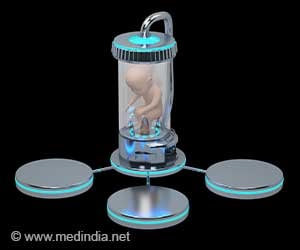
‘Titanium fiber plate aids in facilitating better bone tissue repair than the conventional titanium plate.’
Tweet it Now
"Our titanium fiber plates, unlike conventional titanium plates are prepared by compressing titanium fibers at normal room temperature into plates without changing the fiber shape," said Takashi Takizawa, M.D., the paper's first author from the department of orthopaedic surgery at the Shinshu University School of Medicine. "They can compensate for the major drawback of conventional titanium plates, and find application in a range of fixation and bone tissue repair uses at various sites of the body."
For the first time, patented by Japanese engineers for medical use were put to the test in an animal model. Their results were published in the online issue of the journal Advanced Materials.
Most commonly used to hold bones in place while they heal, titanium plates are erosion resistant and strong enough to hold the mending bones in place. Doctors may elect to implant a titanium plate in a patient with a bad fracture, a severe skull injury, or bone degeneration disease. They're not perfect, though.
In many cases, titanium plates have to be removed after the healing has finished, as they can cause stress shielding in which the bones become brittle.
Advertisement
Awarded a patent by both Japan and the United States, this material offers a myriad of potential clinical uses without the drawbacks of conventional titanium plates.
Advertisement
The difference in stiffness levels can eventually causes eventual bone embrittlement as the bone and plate are in contact.
The team, led by Naoto Saito, the director of the Institute for Biomedical Sciences, and the Interdisciplinary Cluster for Cutting Edge Research at Shinshu University, also tested the use of titanium fiber plates in regenerative medicine.
Since the shape of the titanium fibers remains unchanged as the plates are prepared at room temperature, a unique porous environment is created throughout the plate.
"We've seen how regenerated bone penetrates into the titanium fiber," Takizawa said. "Various enterprises are interested in titanium fiber plates, and we are going to apply the plates to clinical bone tissue repair. I believe that titanium fiber plates can be permanently placed without removal surgery."
Source-Eurekalert











